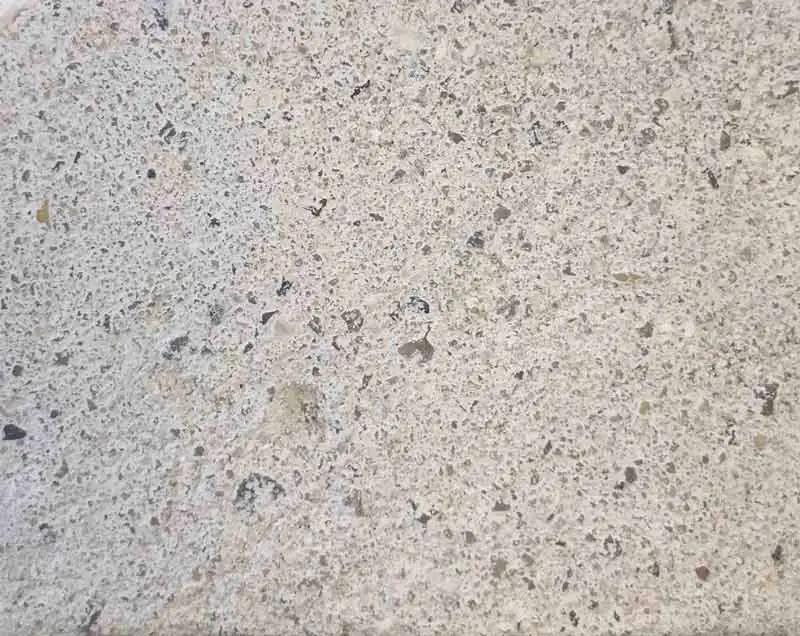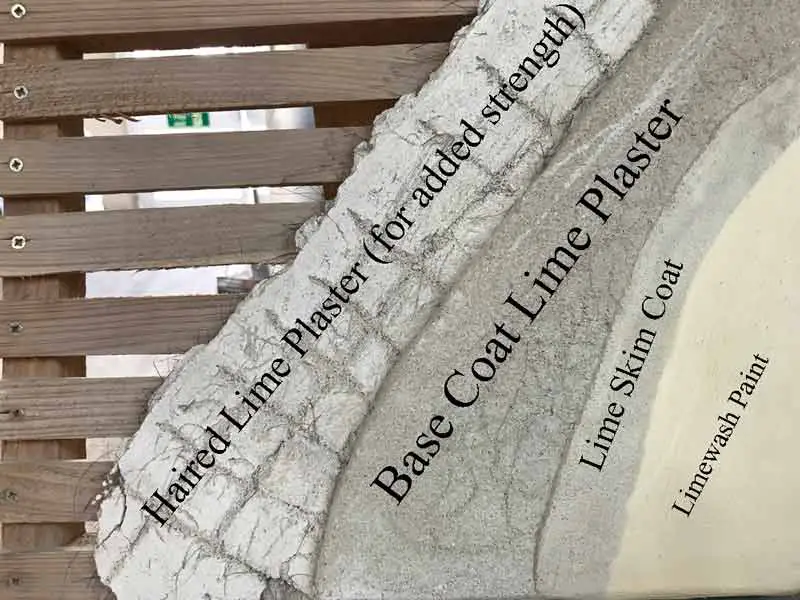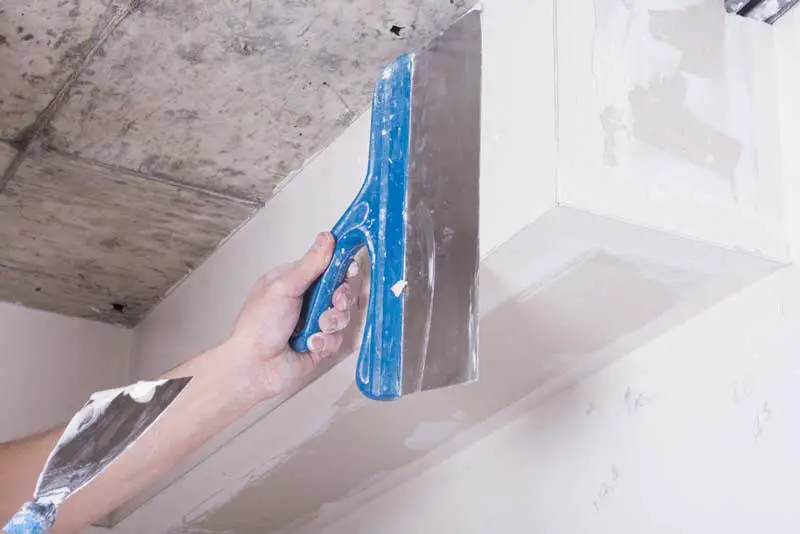
Gypsum is thought to be a relatively modern building material. It has in fact been used for thousands of years, alongside lime plaster. A type of Gypsum, called alabaster, was used as far back as ancient Egypt. Often, alabaster was added to lime plasters and renders to help improve the setting time of lime-based plasters. So what is the difference between Lime and Gypsum Plaster?
The main difference between Lime and Gypsum plaster is the way they set. Lime plaster cures slowly over time by absorbing carbon dioxide out of the air. Lime plaster is breathable and flexible, making it perfectly suited to old traditional buildings that require these characteristics. Modern Gypsum will set rapidly by crystallising once combined with water. When applied correctly, Gypsum plasters create a rock-hard smooth surface. Gypsum plasters are not flexible and do not perform well in damp conditions where they will be at risk of ‘blowing out’.
Let’s go a bit more into detail about each of these plasters and look at what they are and the best places to use each type.
What is Lime Plaster?
Lime plaster is a type of plaster that uses either hydraulic lime (not to be confused with hydrated lime) or lime putty as its binder. Lime has been used as a binder as far back as 7200BCE. Lime plasters and mortars have proven their incredible versatility for thousands of years. They are made by mixing together lime putty and a well-graded aggregate, producing a lovely sticky plaster that has great workability.
What is a well-graded aggregate? Well-graded aggregates have a good ratio of small, medium and larger particles within them. This means that once mixed with lime, these particles can interlock and create a strong well-rounded plaster. Poorly graded sands will often fail, possibly creating a plaster that crumbles or cracks.

Lime plasters can coat almost any naturally built wall and provides the following benefits.
- Breathability. Lime plasters have been extensively used because of their fantastic moisture-controlling abilities. Lime plasters are porous and permeable. This allows water to be expelled from the wall or building without ‘blowing out’ the plaster and render. It’s very important that buildings originally plastered with lime should never be re-plastered with cement or gypsum plasters as this can cause great damage.
- Flexibility. Older buildings have a habit of subtly flexing and moving with the seasons and weather. Therefore, the plaster and render used must flex and move with the building without cracking and breaking. Lime plasters provide this flexibility. This is an especially important factor to consider if your house is built with timber. Lime will be able to move and flex with the timber of the building whereas other plasters will crack and fall apart.
- Eco-Friendly. Lime plaster is a more eco-friendly building material to produce than many other plasters. It requires less energy to produce and during its curing process, it actually absorbs carbon dioxide out of the air. This further reduces the overall carbon footprint of lime plasters.
- Extremely longlasting. There are examples of lime plasters made thousands of years ago that still survive well today. If lime plasters are applied correctly they can easily last for hundreds of years. They are not only long-lasting themselves, but they also protect the building they are applied to by removing excess moisture and preventing other issues.
- Very attractive. Lime plaster has a warm, soft and homely feel to it. In my opinion, if the same house was built with lime vs cement and gypsum, the house built using lime would have a much nicer appearance and feel.
- Fire resistance. Lime plaster is completely fire-resistant. So much so in fact, that after a fire on the London bridge in 1212, King John passed a law that all shops along the river Thames were to be lime plastered inside and out to prevent the spread of a fire in the future.
Related article: Can You Get a Smooth Finish With Lime Plaster?
What is Gypsum Plaster?
Gypsum plaster (also known as ‘plaster of Paris’) has been used as far back as lime plaster. Gypsum plaster is made from a soft mineral composed of calcium sulphate dihydrate. The mineral rock is heated at around 120C which removes some of the chemically combined water. When water is added back to the Gypsum it will rapidly crystallise back into Gypsum rock.

Gypsum plaster is usually used in modern buildings and provides the following benefits.
- Quick set time. Gypsum plaster, depending on how thick it has been applied, can dry in an hour to a couple of days. This reduces the aftercare needed and is therefore much less labour-intensive when compared to lime plaster, which can take up to 1 month to fully cure.
- Fire resistance. Like lime plaster, gypsum is fire-resistant. This is due to the material containing chemically combined water, which helps slow the fire down. In addition to gypsum being fire resistant naturally, you can also purchase special fire-resistant gypsum building materials for extra fire protection.
- No shrinkage. Unlike cement and lime plaster, gypsum does not shrink during the curing and hardening process. This means it is much less prone to cracking.
- Super smooth finish. Using gypsum plasters is a great way to get a perfectly smooth finish. Lime plasters take much more labour to provide a finish as smooth as gypsum.
- Durable and Lightweight. Gypsum provides an incredibly hard and strong surface while also being very lightweight. This reduces the load on the building as a whole.
These factors make gypsum plaster some of the most readily available and most commonly used on the market today.
Related article: The Differences Between Lime Plaster, Mortar and Render
Why Shouldn’t You Use Gypsum on Older Buildings?
Using gypsum plasters on buildings originally constructed with lime plasters can lead to severe damage to the building. So why do gypsum and cement plasters damage buildings originally constructed with lime plasters?
Modern buildings are constructed in a way that keeps moisture out of the building. This means there is no need to use breathable plasters and finishes on walls as there shouldn’t be any moisture to get trapped and cause issues.
Conversely, old building practices were not able to fully eliminate the possibility of moisture getting into the building. Using materials like lime mortars and plasters which allow the building to breathe is therefore imperative. Moisture that got inside an old building in bad weather or other circumstance would be sucked up and expelled by the lime mortars and plasters.
Using a plaster or mortar that doesn’t allow old buildings to breathe will no doubt lead to issues in the future. Trapped moisture can damage and destroy masonry and other materials the building is constructed with, causing many issues in the future. If you are in doubt as to whether your building was constructed with lime or not, I would recommend you always use lime to make any repairs. Applying lime to modern buildings won’t cause any damage and can actually benefit them. However, using cement and gypsum on old buildings will only ever lead to more issues and damage in the future.

